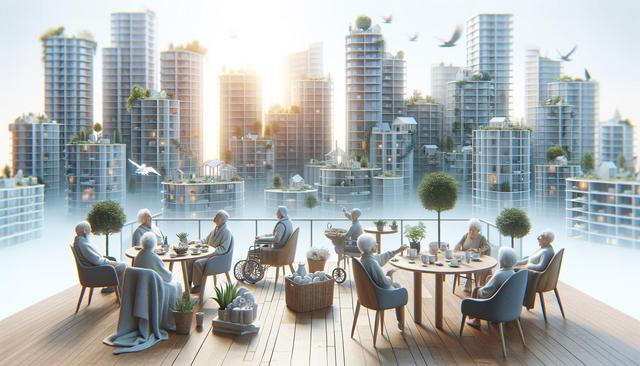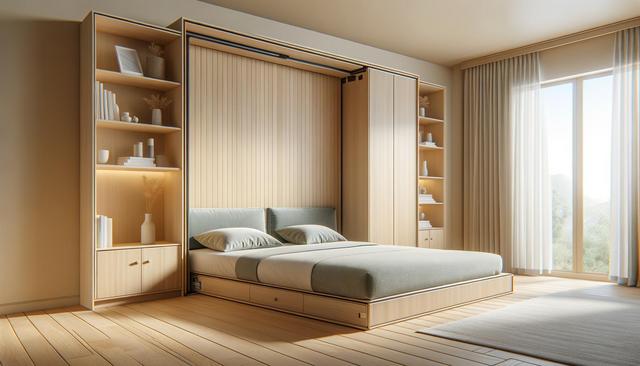
Senior Apartments in 2025: A New Era of Comfortable Living
Modern Design and Accessibility
Senior apartments in 2025 have embraced contemporary design principles that prioritize both aesthetics and accessibility. As the population ages, developers have responded by creating spaces that are not only functional but also visually appealing. Apartments now commonly feature open floor plans, wider doorways, and no-step entries to accommodate mobility aids. Bathrooms often include walk-in showers with grab bars, non-slip flooring, and seated areas for added safety and convenience. These features are integrated seamlessly to support aging in place without making residences feel clinical or institutional.
Smart home technology is also playing a larger role. Many senior apartments are equipped with voice-activated systems, automated lighting, and temperature controls. These features offer residents greater independence while reducing their reliance on outside assistance. Emergency response systems are discreetly integrated throughout the units, providing peace of mind for both residents and their families.
Community and Social Engagement
The importance of social interaction in maintaining mental and emotional well-being is well recognized in 2025. Senior apartment complexes now emphasize community-oriented living, with common areas designed for connection and activity. Residents can enjoy shared lounges, game rooms, libraries, and multipurpose rooms for events and workshops. These spaces encourage interaction, reducing feelings of isolation that older adults may experience.
Many communities also offer structured activities and clubs based on shared interests. Examples include:
- Gardening groups
- Fitness and wellness classes
- Art and craft workshops
- Book clubs and discussion circles
These programs help residents build relationships and stay mentally active, contributing to a higher quality of life. In some locations, intergenerational initiatives are also being introduced, fostering meaningful connections between seniors and younger community members.
Technology Integration and Safety
Technology in senior apartments has advanced significantly by 2025. In addition to smart home features, wearable health monitors and telehealth services have become standard. These tools allow residents to manage chronic conditions and consult healthcare providers without leaving home. Real-time data can be shared with medical professionals, ensuring prompt responses to potential health issues.
Security systems have also evolved, offering more than just surveillance. Biometric entry, motion-detecting lights, and mobile alerts provide enhanced safety. Buildings are often monitored 24/7, and residents have access to on-site staff or emergency call services at all times. These innovations help seniors maintain autonomy while ensuring they remain protected in their living environments.
Affordability and Financial Considerations
Affordability continues to be a key concern for many seniors. In 2025, a variety of financial models have been developed to make senior apartments more accessible. Options now include income-based rent programs, government subsidies, and cooperative housing models where residents share ownership and costs. These alternatives provide flexibility for individuals with different budget constraints.
Some communities also offer tiered service packages, allowing residents to pay only for the amenities and support services they need. For example:
- Basic rent with optional add-ons such as housekeeping or meal plans
- All-inclusive packages with transportation, medical coordination, and wellness programs
- A la carte services that can be adjusted over time
This approach enables residents to customize their living arrangements to suit their financial and lifestyle preferences, making senior apartments a viable option for a broader demographic.
Environmental and Lifestyle Sustainability
As sustainability becomes a priority across all housing sectors, senior apartments in 2025 are no exception. Many new developments incorporate eco-friendly materials, energy-efficient systems, and green building certifications. Features such as solar panels, rainwater harvesting, and community gardens contribute to a more sustainable way of life.
In addition to environmental sustainability, lifestyle sustainability is gaining traction. This means creating environments that support long-term well-being, including access to healthy food, fitness opportunities, and mental health resources. Walkable neighborhoods, proximity to medical services, and availability of public transportation are key factors influencing where senior apartments are built.
Developers and planners are increasingly including amenities that promote wellness, such as:
- On-site fitness centers with age-appropriate equipment
- Walking trails and outdoor seating areas
- Partnerships with local healthcare providers
These elements support a balanced lifestyle, helping seniors stay active, connected, and engaged with their communities.


